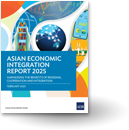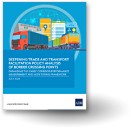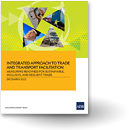Capital Markets Can Power Southeast Asia’s Sustainable Pandemic Recovery
With the right policies in the sustainable finance market, Southeast Asian governments can add momentum to the region’s post-pandemic recovery and improve lives through the achievement of the Sustainable Development Goals.
The COVID-19 pandemic has widened budget deficits in many Southeast Asian economies through lower tax revenue and higher spending on healthcare and recovery. This leaves less revenue to invest in social and economic development, particularly through the pursuit of the Sustainable Development Goals (SDGs).
This has raised the risk that recent progress toward the goals may be reversed and people may suffer as a result. Asia and the Pacific as a whole was already behind schedule in terms of meeting the goals by 2030, and the pandemic has set the region back further.
One way in which governments can compensate for this is to mobilize private capital for sustainable investments. In Southeast Asia, countries have already made significant progress in this area.
Green, social, and sustainability bonds, which are issued to obtain direct financing for investments targeting long-term environmental and social challenges, have grown rapidly in the region since 2017, when the ASEAN Capital Markets Forum introduced standards for such bonds.
In September 2021, the cumulative value of ASEAN-labeled green, social, and sustainability bonds issued in Southeast Asia reached $16.4 billion.
Even so, the region’s market for such bonds remains small relative to the $524 billion combined size of local currency bond markets. This suggests that policymakers have significant opportunities to boost sustainable finance markets by encouraging corporations and institutional investors to incorporate environmental, social, and governance factors into their operations and investment decisions.
There are several ways to do this:
First, governments should demonstrate their commitment. Some have already set good examples for others to follow. Indonesia issued Southeast Asia’s first sovereign green sukuk, or Islamic bonds, in 2018. Thailand issued the region’s first sovereign sustainability bond in 2020, as part of the country’s COVID-19 recovery program. And in April this year, Malaysia issued the world’s first sovereign dollar-denominated sustainability sukuk.
Regular sovereign issuance of sustainable bonds helps corporate issuers to more accurately price their bonds and determine risk premiums. Malaysia and Singapore have also boosted private investor confidence by introducing sustainable bond/sukuk grant schemes to facilitate green, social, and sustainability bond issuance, whereas other countries have provided subsidies, such as reduced approval and registration fees for green, social, and sustainability bonds.
Second, governments need to provide practical regulatory guidance. The implementation of the ASEAN Green, Social, and Sustainability Bond Standards demonstrates strong collaboration among securities regulators, and by incorporating the standards into their national regulatory frameworks, the participating governments have sent a clear signal to the market.
Additionally, securities regulators should consider creating an environment that encourages these financial products. For instance, they may establish a so-called "green lane" to speed up the approval of financial products that contribute to positive environmental and social outcomes. It is also advantageous to have external reviewers with extensive knowledge of local contexts, regulations, and markets. This is especially true in Southeast Asia, with its diverse cultures and disparate levels of economic development.
Third, partners such as multilateral development banks can assist national regulators with market development efforts and provide technical support. They can facilitate policy discussions and provide capacity building programs for regulators, aimed at helping them develop local sustainable capital markets through collaboration with advanced economies. Development partners can also assist market participants and intermediaries in strengthening markets and stimulating supply and demand.
While the sustainable finance market in Southeast Asia has grown remarkably, much work remains to be done. By taking the right steps, governments can add momentum to the region’s post-pandemic recovery and provide resources to improve lives through the implementation of the Sustainable Development Goals.
Original article was published at the Asian Development Blog and duplicated here with permission from the authors. *




